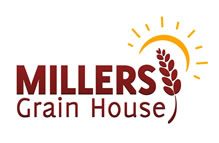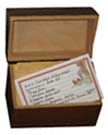Have you ever faced the end of a holiday season and had an overflow of foods that are usually not eaten through out the year? We face this after almost each holiday and ti forces me to become creative to avoid wasting food.
Usually, I clean out the refrigerator a little each week, but after a holiday – this required some serious attention. Weekly refrigerator cleaning is key to stretching the grocery dollars.
Although usually my focus is on whole wheat , the truth is that although whole grains are a great base for a healthy and frugal grocery budget, they are not alone on the menu. Learning to make the most of each ingredient, fresh, frozen, or otherwise will help make the most of your groceries and help them to stretch giving you more life for your dollar.
We hope you enjoy the video and subscribe. There are more ideas to prolong the life of your food in the remainder of the series.
 Last week I began my show on choosing, using and storing healthy oils only to discover 3 minutes before the show was to end that my microphone was muted. Needless to say, this is now the topic of the upcoming radio show!
Last week I began my show on choosing, using and storing healthy oils only to discover 3 minutes before the show was to end that my microphone was muted. Needless to say, this is now the topic of the upcoming radio show!
Choosing, storing and using healthy oils is the key to making good choices in your diet. Your health is not only affected by the type of oil you choose, but also how you use it. Over heating can actually turn a good fat into a bad fat (trans fat). Storing oil is also vital to making sure you don’t get sick by using oil that has gone rancid.
Fat and oil have gotten a bad wrap over the years. The truth is that not all fats are created equal. Your brain, your hair, your skin and your arteries need healthy oils and healthy fat to function properly. The key is learning what choices to make and what to stay away from.
I will share with you a bit more information about healthy oils! Some of the topics that will be touched on are:
- What are the smoke points of oils and why is that important information?
- Should you worry about the fat content and type?
- Decipher single chain, Mono-Unsaturated Fatty Acids.
- Is there such a thing as a healthy saturated fat?
- How to spot ‘impostor olive oil’ in the grocery isle.
- What about the spray oils or non-stick sprays?
Stop by our Facebook Page if you have specific questions about this topic and leave a comment/question.
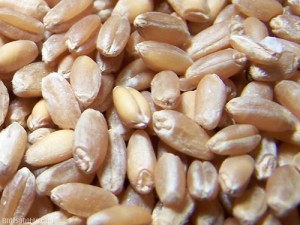 In videos, recipes and general conversation around my home, when we say the words, “whole wheat”, we only mean freshly milled whole wheat.
In videos, recipes and general conversation around my home, when we say the words, “whole wheat”, we only mean freshly milled whole wheat.
When we say flour, we mean freshly milled whole wheat flour.
We just don’t use any other type.
Dead-Whole-Wheat-Bagged-Flour has oxidized as it has sat in the bag. Also the miniscule amount of vitamin E (wheat germ oil) left after the majority of it being stripped from the grain during processing (for shelf life) has begun to go rancid. That is the bitter taste.
We have not used bagged whole wheat flour or bagged enriched white flour for YEARS. However, when sharing recipes, we may often simplify by just saying whole wheat or flour, but we always mean flour that has been freshly milled at home from the whole grain of wheat.
Coming soon is a brief video explanation of WHY we use freshly milled whole wheat flour on our YouTube Channel. Go subscribe to that channel to be more informed!
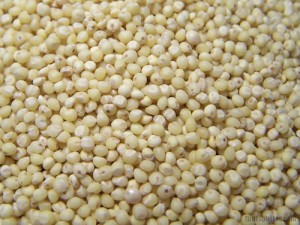 Low gluten and gluten-free items can be very expensive to buy in the store. So if you want to know what you’re getting and if it ‘s right for your gluten-free or lower gluten diet, it would be good to learn a little more about the grains you can use. I began my journey in home-milling because of a diagnosis of gluten sensitivity. Thankfully I found it was the processing of wheat flour that was my issue, not the gluten (as is the case in many people’s mis-diagnosis) and I can again eat freshly milled whole wheat. But I did learn of several grains that work well for a lower gluten or gluten-free diet.
Low gluten and gluten-free items can be very expensive to buy in the store. So if you want to know what you’re getting and if it ‘s right for your gluten-free or lower gluten diet, it would be good to learn a little more about the grains you can use. I began my journey in home-milling because of a diagnosis of gluten sensitivity. Thankfully I found it was the processing of wheat flour that was my issue, not the gluten (as is the case in many people’s mis-diagnosis) and I can again eat freshly milled whole wheat. But I did learn of several grains that work well for a lower gluten or gluten-free diet.
Because these grains all contain a trace to no gluten, they will all require some kind of binding agent in the recipe in which you use them. Gluten protein forms strands to hold dough together when baking. These grains do not have those strands so you cannot replace the milled flour of a low to no gluten grain exactly for wheat flour.
Millet (pictured above) is one of the staples in a gluten free diet. Millet can be cooked as a replacement for couscous (which is a wheat pasta, not a grain) or milled into a flour.
Quinoa is another low gluten grain. It is very high in protein and also cooks well whole.
Rice is a gluten-free grain. When milled the flour is very fine and suitable for thickening sauces.
Rye is an extremely low gluten grain. The flour is suitable for baking flat breads and using in batter bread mixtures.
Corn is low gluten. There is a trace amount of gluten & starch in some corn meals.
Oats can contain a trace amount of gluten. If you suffer from Candida or Celiac’s , be sure the oats you purchase are labeled ‘Gluten-Free’ since not all oats are gluten free.
Spelt is another grain often used in low to no gluten diets, but it does indeed have trace amounts of gluten in it. It can be kneaded but only for a short time after which over kneading causes the dough to become very sticky.
Kamut is not low or gluten-free. Kamut is an ancient grain akin to today’s wheat derivative.
Let me encourage you that if you have been diagnosed with a gluten sensitivity or a gluten intolerance, you may be able to enjoy whole wheat bread again if you mill the wheat at home and use it fresh. However, if you have been diagnosed with Candida or Celiac’s consider milling these low to no gluten grains at home to save yourself some money and give you variety in your diet.
 I am regularly asked: “Why should I mill whole wheat and grains at home“? It’s certainly an important question, and one that I asked myself when I first became interested in whole wheat and grains. Now, I know why it is so important!
I am regularly asked: “Why should I mill whole wheat and grains at home“? It’s certainly an important question, and one that I asked myself when I first became interested in whole wheat and grains. Now, I know why it is so important!
On my weekly radio show, I explore the topic and offer some insights. We want to share that recording with you and hope you will offer your comments below.
We certainly want to invite you to attend our weekly live show, “Encouragement in the Kitchen.” If you are unable to attend, we record the shows and post the audio recordings in our radio archives section.
We always love to hear your comments.
Best Blessings!
I hope you’ve had the chance to view our daughters’ video: Pancakes from Scratch. Below the video is the (whole) recipe and a little history behind this recipe that is a Miller Family Weekend Staple.
Usually every Sunday, we have either Whole Wheat pancakes made from scratch or Whole Grain Waffles made from scratch. As the girls show you above, it is actually quick and simple to mix all the dry ingredients together in one container and all the wet ingredients together in another the night before and have easy, almost instant Whole Wheat Pancakes faster than a box mix.
Heart-healthy Whole Wheat Pancakes
Wet Ingredients:
2 1/2 Cups of Low Fat Buttermilk
1/2 Cups Egg Whites
2 Whole Eggs
1/4 Cups Canola Oil
1 tsp Vanilla Extract
Dry Ingredients:
4 Cups Fresh-Milled Whole Wheat (white wheat) Flour
2 tbsp Sugar
1 tsp Baking Soda
1 tsp Salt
2 1/2 tsp Baking Powder
Just follow their lead for instructions!
If you have left over pancakes (we do that on purpose) allow them to cool on a cooling rack and place in a zip-lock bag with wax or parchment paper between them and freeze. They pull out singularly and toast in a toaster to the perfect pancake once again! Great for those mornings on the go!
By the way, the ‘Yellow Bowl’ featured in many of our videos is the famous yellow bowl that has been in my newsletters before. It is one of the inanimate objects I would try to grab in a house fire. The reason is because it was one of the first things given to me by my mother-in-law (who also influenced my and the daughters’ love of cooking) and because we have so many family meals together that the beginnings of which start in that yellow bowl. It, it priceless only because it links me to my greatest gift on earth, my family.
I hope you enJOY and become a part of the Millers Grain House extended family by subscribing to our Newsletter. You’ll get free recipes!!
We always love hearing from our extended family (you) at Millers Grain House! We are very excited about the new addition of a whole grain recipe section! We’re going to need you to help us build and share it!
The best part about submitting your whole grain recipes is that we will be testing and trying a few in our own test kitchen. Who knows, your recipe could end up in one of our videos or on our newsletter! Even if we tweak it (it’s always fun to play with a new recipe) we’ll give you the props for sharing it with us!
Whole grains don’t have to be boring and we know you can help us widen the variety of uses! We are looking forward to sharing, testing and TASTING what you share with us!
Go HERE to submit a recipe! Put the words WHOLE GRAIN RECIPE in the subject line.
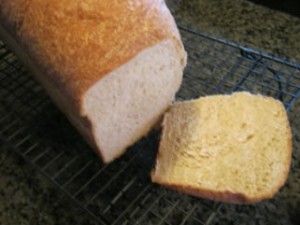 It wasn’t too many years ago that every morning moms around America would wake up early to put bread in the oven, or shuffle into town to the local bakery. Homes across the country would have the unique aroma of freshly baked bread.
It wasn’t too many years ago that every morning moms around America would wake up early to put bread in the oven, or shuffle into town to the local bakery. Homes across the country would have the unique aroma of freshly baked bread.
While we are all thankful for the convenience of store-bought and pre-sliced bread today, there’s still nothing that compares to the smell and taste of a wonderful loaf of home-cooked bread.
Bread baking is an art, one that inspired Donna Miller to help pass it on to other families through Miller’s Grain House and her new e-book, Whole Wheat Bread Making.
Making your own whole wheat bread has several benefits:
- Simple enough for everyday, but delicious enough for special occasions.
- Your kitchen is filled with wonderful aromas.
- Making your own bread is healthier than preservative filled bread.
- Homemade bread tastes wonderful.
- Kneading bread dough is a great stress relieving exercise, and a great alternative to physical violence against the causes of your stress. (Offspring and spouses in particular.)
- Delicious satisfaction following a job well done.
- There is a wonderful smell from the cooling rack.
- More economical than store-bought bread.
- Huge variety of uses from simple toast or sandwiches to gourmet dinners.
- … And did we mention the amazing smell!
This e-book walks you step-by-step through every detail of becoming a master bread maker. It is filled with 40 pages of instructions, tips, detailed photos and diagrams showing you how to make a variety of whole wheat breads. Whether you prefer hand kneading or using a bread machine, you’ll receive detailed instructions. You’ll learn how to make perfectly formed the loaves with bakery perfection, and do free-form baking without a pan. You’ll learn kneading and folding techniques. It will help you choose the best bakeware and what to look for in a bread making machine. You’ll learn everything from setup to clean up. We teach you the proper way to slice bread without tearing. And… you will learn to make hoagie rolls, hot dog buns and hamburger buns.
Whether you want to make bread once a day or once a year, you’ll love this resource.
Donna Miller is a teacher, author, and talk radio host with two weekly broadcasts specializing in encouragement in the kitchen.
Donna’s e-book, Whole Wheat Bread Making, is available for instant download today for only $9.97. Downloaded to your computer, iPad or Kindle and get ready to bake.
Order the Make Bread e-book today! Order Here
Warning: Excessively awesome smells from your kitchen tend to attract neighbors, friends, and family. Miller’s Grain House cannot accept responsibility for the appearance of bread loving moochers. Possible side effects include: unwillingness to settle for store-bought in the future, improved health, random hugs and kisses from family members. Bake at your own risk!
Whole wheat is so good for you compared to white bread. There is no denying that the health benefits of whole wheat out-weigh those of it’s white flour counter part. But a loaf of ‘healthy bread’ in the store is getting increasingly more expensive! Not to mention, many ingredients in the so-called healthier breads really are still not that good for you!
So many folks turn to trying to make whole wheat bread at home only to be disappointed in texture, taste, density, shape, gooey and/or short stocky loaves. Also, many recipes give a list of additional ingredients that are supposed to make white flour bread more ‘healthy’ and the cost per loaf begins to sky rocket.
It’s enough to make someone give up and go back to the colon clogging white loaf bread in the store! NO! Please for your body’s sake – don’t do that!
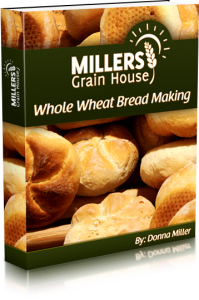 It is with the utmost of anticipation that I am delighted to announce the recent release of my newest e-book. As a better teacher, I can teach a class on this subject and everyone leave with a perfect loaf of bread, even if they’ve never touched whole wheat flour before. Live classes are my favorite! I love to see the joy and confidence on the faces of the participants as they take home their creations to share!
It is with the utmost of anticipation that I am delighted to announce the recent release of my newest e-book. As a better teacher, I can teach a class on this subject and everyone leave with a perfect loaf of bread, even if they’ve never touched whole wheat flour before. Live classes are my favorite! I love to see the joy and confidence on the faces of the participants as they take home their creations to share!
This book has been a labor of love for me. Usually in a class, I have the benefit of conversation and hands-on demonstration. In this book, I’ve endeavored to show and describe techniques and tips that we discuss, demonstrate and do in a live class together. I hope it helps you on your way to producing consistently tasty and beautiful loaves of whole wheat bread for your family!
You can follow this link to see what others say about it and get a copy of your own: Whole Wheat Bread Making
